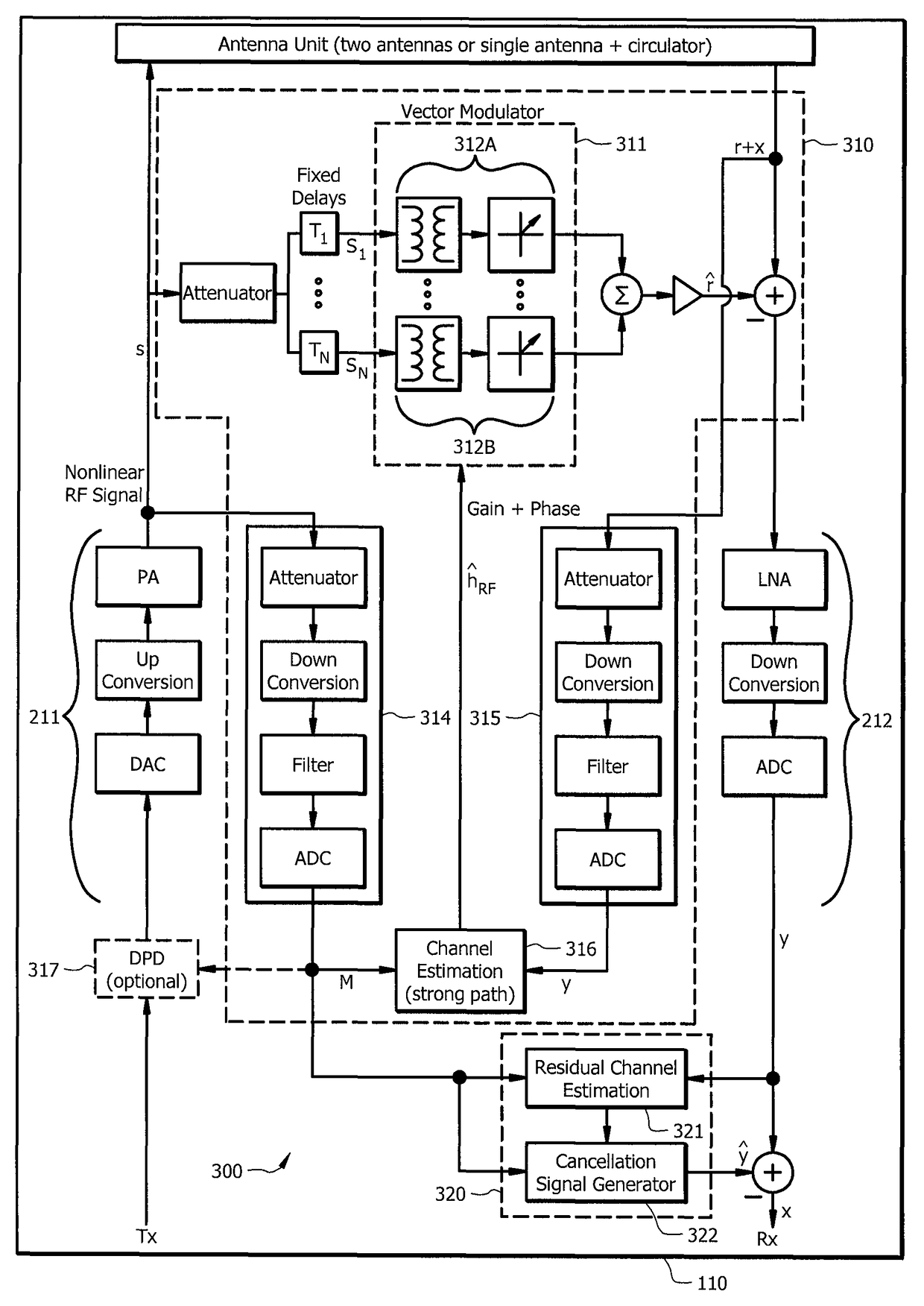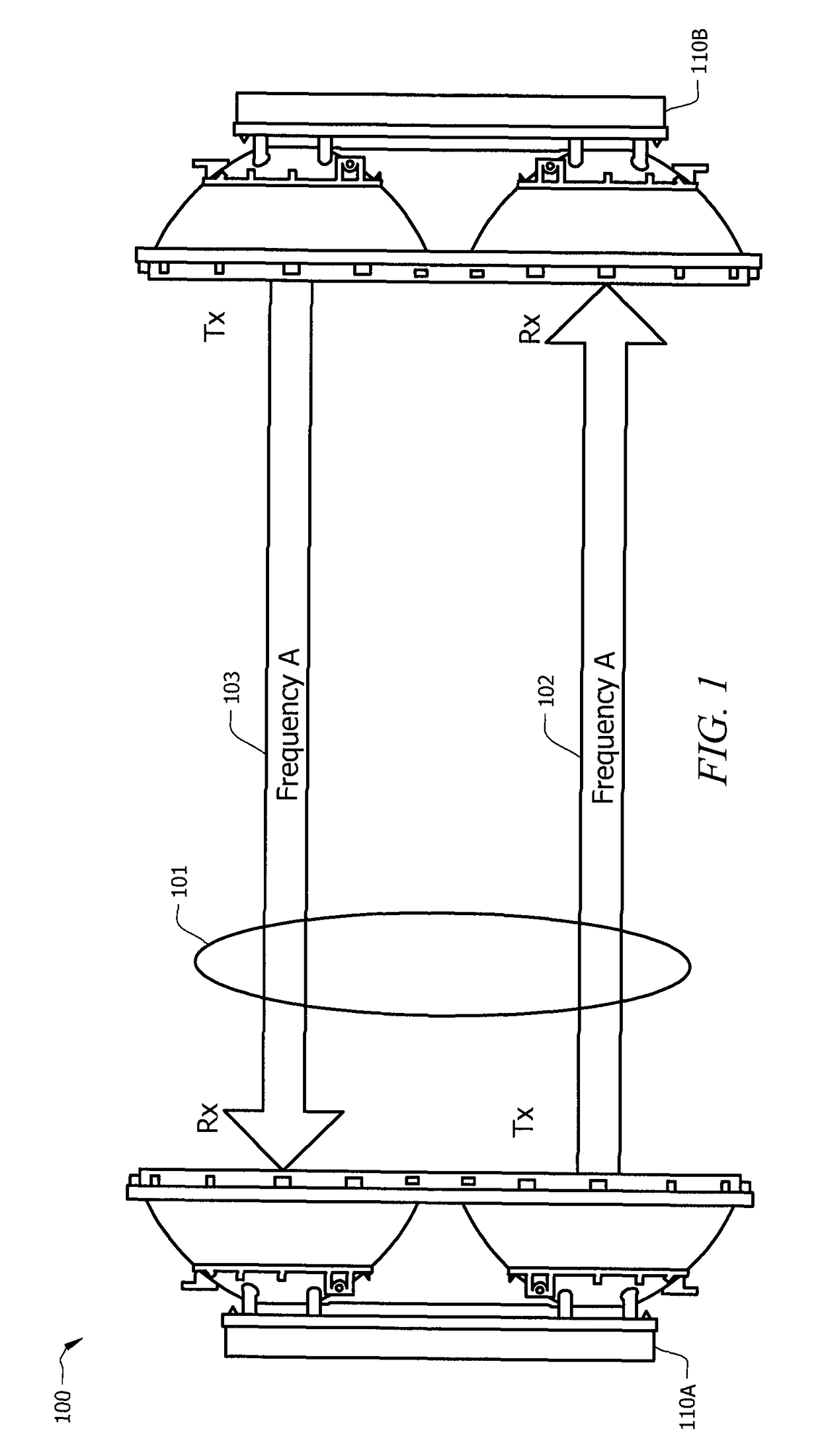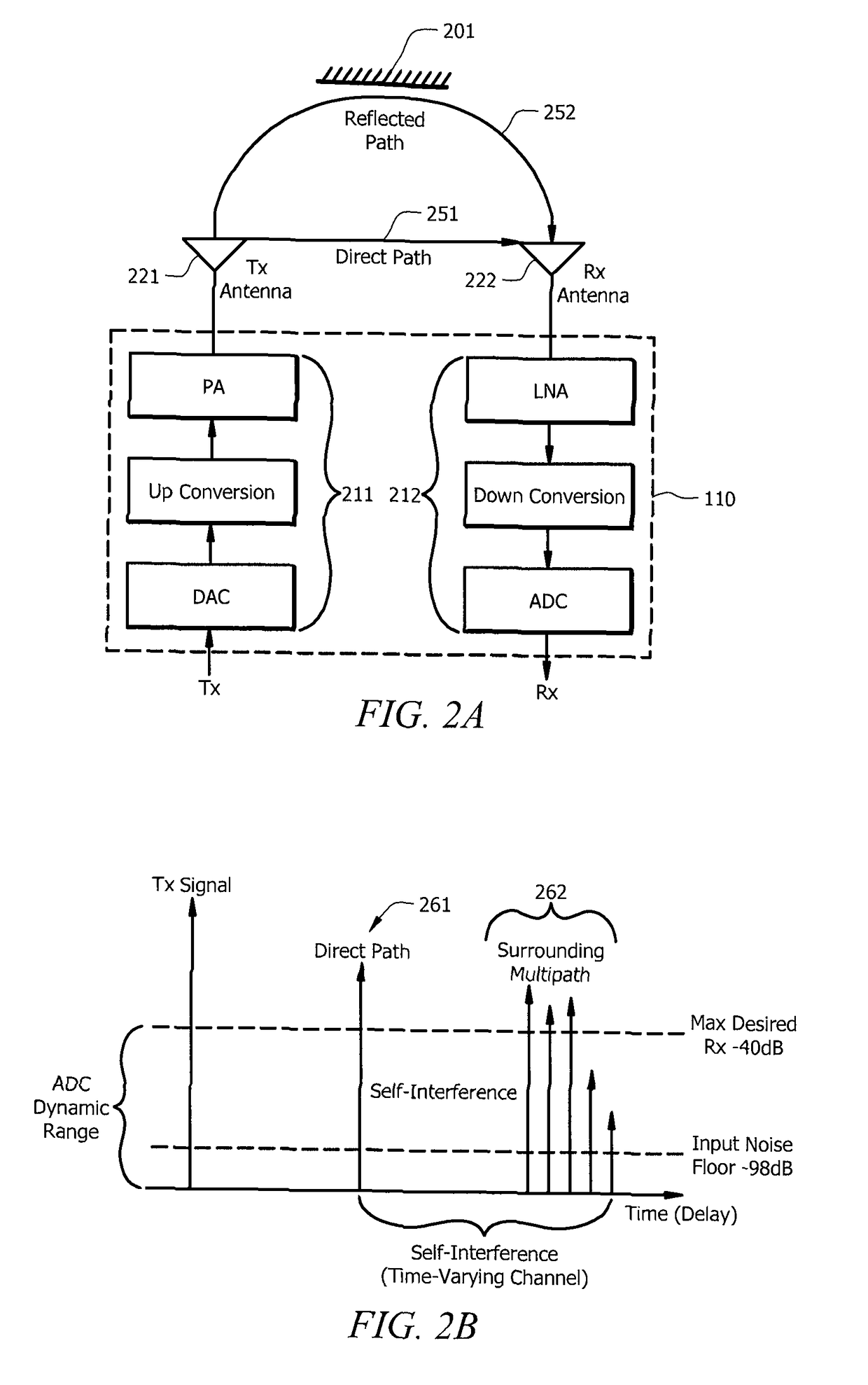Systems and methods for mitigation of self-interference in spectrally efficient full duplex communications
a full duplex communication and self-interference technology, applied in the field of communication, can solve the problems of poor communication quality, limited bandwidth availability of individual devices, and inconvenient and achieve the effect of facilitating the implementation of spectrally efficient full duplex communications and facilitating greater flexibility in spectrum usag
- Summary
- Abstract
- Description
- Claims
- Application Information
AI Technical Summary
Benefits of technology
Problems solved by technology
Method used
Image
Examples
Embodiment Construction
[0028]FIG. 1 illustrates operation of a spectrally efficient full duplex communications system. Spectrally efficient full duplex communications system 100 of FIG. 1 includes stations 110A and 110B (only a portion of which are shown in the illustration) in data communication via wireless link 101. Stations 110A and 110B may, for example, comprise various forms of processor-based devices, such as user devices (e.g., personal computers (PCs), notebook computers, personal digital assistants (PDAs), cellular telephones, smart phones, tablet devices, workstation terminal devices, kiosk terminals, etc.), service provider devices (e.g., servers, head-end systems, back-end systems, operations, administration, maintenance, and provisioning (OAM&P) systems, etc.), and / or infrastructure devices (e.g., access points (APs), base stations (BSs), switches, routers, etc.). Wireless link 101 may be provided by a wireless communications network, such as may comprise a portion of the PSTN, the Internet...
PUM
 Login to View More
Login to View More Abstract
Description
Claims
Application Information
 Login to View More
Login to View More - R&D
- Intellectual Property
- Life Sciences
- Materials
- Tech Scout
- Unparalleled Data Quality
- Higher Quality Content
- 60% Fewer Hallucinations
Browse by: Latest US Patents, China's latest patents, Technical Efficacy Thesaurus, Application Domain, Technology Topic, Popular Technical Reports.
© 2025 PatSnap. All rights reserved.Legal|Privacy policy|Modern Slavery Act Transparency Statement|Sitemap|About US| Contact US: help@patsnap.com



